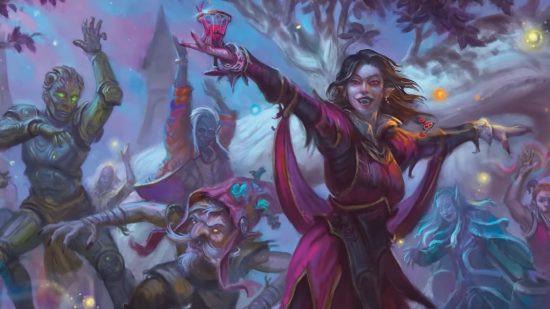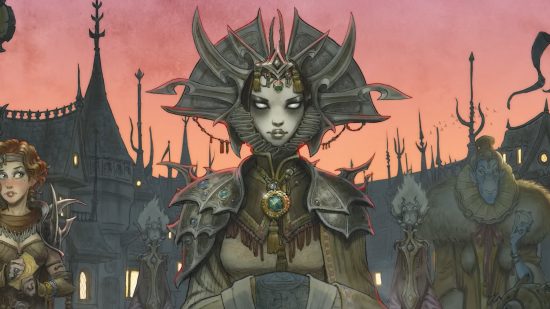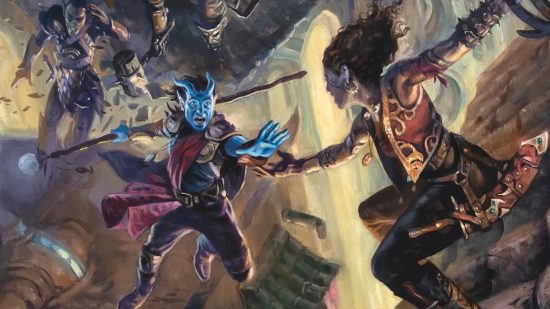“Encounters and locations done for a quick laugh’ll sink the tone of Sigil faster than lead weights.” So says Planescape Campaign Setting, the second edition boxed set that introduced one of Dungeons and Dragons’ most iconic locales. The original Planescape books had a grim edge and a big focus on philosophical debates about meaning in the multiverse – something Planescape 5e has ditched almost entirely.
1994’s Planescape established the DnD city of Sigil as a place of competing factions, each claiming their interpretation of the multiverse was the true and correct one. Ideology was so powerful that entire towns in the Outlands could be absorbed by DnD planes if their beliefs came too close to the DnD alignments.
This skeleton is still present in Planescape 5e, but things have been considerably watered down (the factions of Sigil are described in just seven pages of the boxed set, for example). And not only are the DnD setting’s themes thinned out – they’re often played for laughs. Some second-edition DMs might call that downright sacrilegious.
The change is most visible in the set’s DnD campaign, ‘Turn of Fortune’s Wheel’. Here we see the phrases ‘lighthearted’ and ‘romp’ skipping merrily through the fields of Arborea, hand-in-hand. Planescape factions appear to serve as gag encounters, and for every moment of existential musing, there’s a Vegas-style Vecna impersonator prompting a giggle from a player.
The campaign’s primary mechanic – ‘glitches’ that allow characters to return from the dead as a new variant of themselves – promotes silly roleplay by design. In the right hands, these multiversal replicas could lead to some very ‘Planescape-y’ musings on the nature of the self.

But when death doesn’t hold players back, they’re free to pull the most outlandish stunts possible. And in the fifth edition Planescape books, the DM is instructed to encourage this.
Change isn’t necessarily a bad thing, though. And, to a certain extent, D&D has moved past the need for titles like the original Planescape. The first boxed set was released at a rock-bottom moment for TSR, the original publisher of Dungeons and Dragons.
Boxed sets were losing money, and the edgy, faction-based Planescape was something of a bid to compete with the hot tabletop RPG of the ‘90s – Vampire the Masquerade. Just three years after Planescape’s release, the unprofitable TSR handed D&D over to Wizards of the Coast.
Yes, Planescape has a cult following who love the setting as it was imagined in the ‘90s. But grim fantasy isn’t quite so en vogue now, and even if it was, D&D is a brand that can afford to march to the beat of its own drum. The changes made for fifth edition track with the direction Wizards of the Coast has mapped for D&D.
And honestly, many of these choices make for interesting, fun roleplay (we’ll talk more about this in our upcoming Planescape review).

Planescape 5e is an altered, more jolly beast than its predecessor. That’s no bad thing – but die-hard fans of the original should know what they’re getting into.
There’s only one DnD book left in the DnD 2023 release schedule – you can learn more about it in our dedicated guide. And, if you need help with DnD character creation for your next campaign, here’s all you need to know about DnD classes and DnD races.
Source: Wargamer





